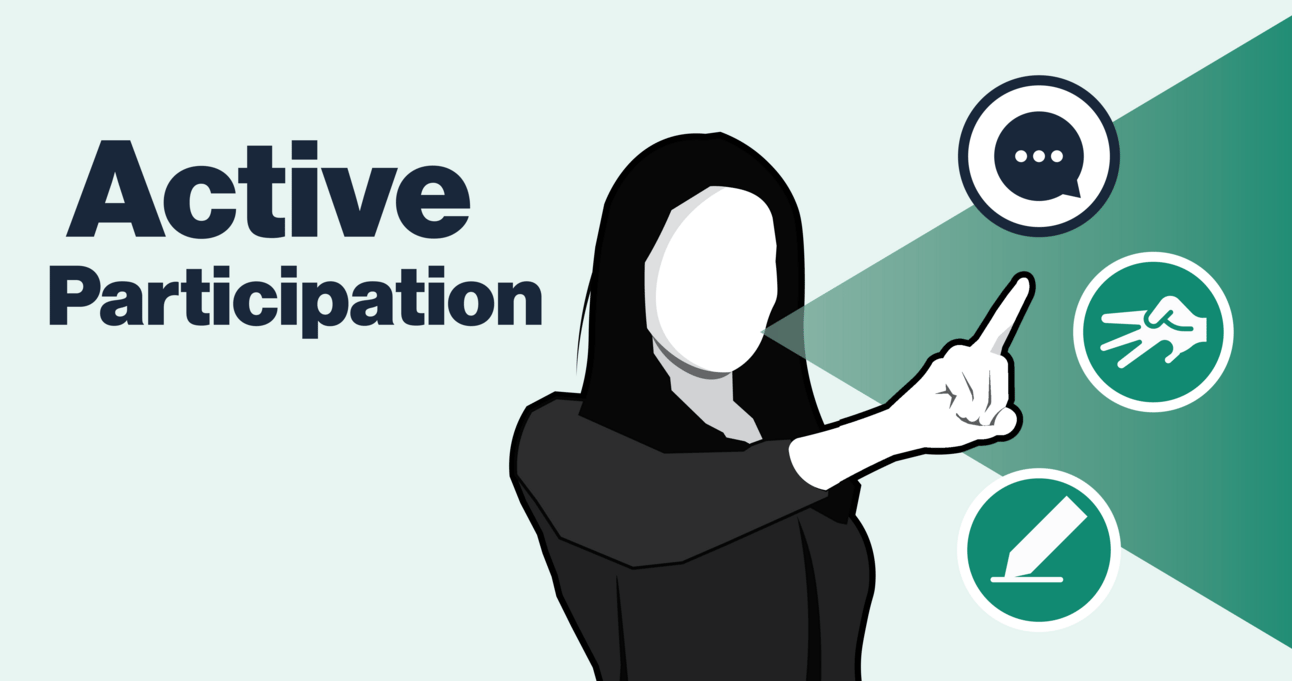👋 Hello {{first name | friend!}}
In this edition of ⚗️DistillED, we explore active participation—the practice of engaging students by frequently prompting them to write, say, or do something throughout a lesson.

What is active participation?
Explicit Instruction by Anita Archer and Charles Hughes is one of my top educational books. In it, the authors outline four essential delivery skills for explicit instruction. They are:
Require frequent responses
Monitor student performance carefully
Provide immediate affirmative and corrective feedback
Deliver the lesson at a brisk pace
As part of their first principle, the authors dispel the common misconception that explicit instruction is didactic and passive. On the contrary, they emphasise that it should actively engage students by continually prompting them to write, say, and do something throughout the lesson.
“Whether you are teaching a large or small group, you must elicit frequent responses by requiring students to say, write and/or do things. If instruction is truly interactive and students are constantly responding, then attention, on-task behaviour and learning increase.”
The diagram below illustrates the relationship between the main elements of these core delivery skills. As you can see, active participation sits within the INPUT–QUESTION–RESPONSE loop, where teachers present information (input), check understanding (question), and prompt students to respond.

So, what are the main techniques we can use to elicit frequent responses from students and create a classroom environment of active participation? Let’s take a closer look:
Do
Hand Signals (thumbs up/down)
Gestures (e.g. showing tectonic plate movement with hands)
Touching (“put your finger on the adverb”)
Acting Out (e.g. physically show solids, liquids, gasses)
Want this new one-page guide?
DistillED+
DistillED+ subscribers get instant access this exclusive A3 one-page guide which captures the active participation.

Why are is active participation effective?
The goal of active participation is to maximise the number of successful responses—aiming for around 80% accuracy. As Barak Rosenshine explains in his Principles of Instruction:
“The research also suggests that the optimal success rate for fostering student achievement appears to be about 80 percent. A success rate of 80 percent shows that students are learning the material, and it also shows that the students are challenged.”
Getting students to write, say, or do something provides opportunities to rehearse and consolidate information, strengthening long-term memory. Over time, these repeated, successful responses help develop automaticity in foundational skills, reducing the load on working memory and freeing up cognitive resources for more complex thinking.
Moreover, when we regularly prompt students to participate, we can quickly spot misunderstandings and make timely adjustments to the lesson’s pace, content, or level of support. Other benefits of interactive instruction are summarised in the graphic below.

So, how do weave active participation strategies into our instruction?
Let’s have a look…
How do I ensure students are actively participating?
The six-step sequence below is a practical starting point when you’re ready to make the Input–Question–Response cycle an intentional part of your classroom practice, with a focus on active participation strategies that get students to say, write, and do something to show their thinking:
Step | What You Do | Example |
|---|---|---|
Cycle A | Present information in small, clear blocks. Model the skill and think aloud. | “Let’s look at how to infer what a character is feeling. Watch as I read this paragraph about Tom and highlight clues about his mood.” |
2. Question | Ask purposeful questions to check understanding. Use wait time. | “What words or phrases helped me figure out how Tom feels here? (Pause 3–5 seconds.)” |
3. Response | Elicit a response—oral, written, or physical. | Say: “Tell your partner one word that shows Tom’s feelings.” |
Cycle B | Present the next chunk of content. Provide a worked example. | “Now let’s look at how to turn that evidence into an inference. I’m going to write a sentence explaining Tom’s feelings using the word ‘because.’” |
2. Question | Ask a follow-up question to check deeper understanding. | “Why is it important to back up your inference with evidence? (Pause.)” |
3. Response | Elicit another response—oral, written, or physical. | Say: “Turn and talk with your partner why evidence makes your answer stronger.” |
Remember, after each response, it’s vital to respond and adapt your teaching accordingly. For example, if many students show uncertainty, you might re-model the step or provide an extra guided example. If most students demonstrate confidence (80%), you can move on to independent practice or introduce a greater level of challenge.
Until next time — stay curious, stay clear!
Jamie
Where can I find out more?
Active Participation Plan
To help you use active participation strategies effectively, I’ve created a planning sheet that guides you to break lessons into clear chunks and build in regular opportunities to check for understanding—whether students are doing, saying, or writing.

Guide, Checklist and Slideshow
This week’s ⚗️DistillED+ resources are a brand new one-page guide, checklist and PowerPoint slideshow for teacher CPD. They include the WHAT, WHY and HOW of active participation and the ‘do, write, say’ strategies to maximise learning.
Upgrade to ⚗️DistillED+ download the content.

Click the upgrade button below access DistillED+ content!
Join DistillED+
Members gain access to expertly curated digital evidence-informed content
UPGRADEA ⚗️DistillED+ subscription gets you:
- Full access to new premium one-page guides
- Full access to evidence-informed strategy checklists
- Full access to slide templates (PowerPoint and Keynote)


